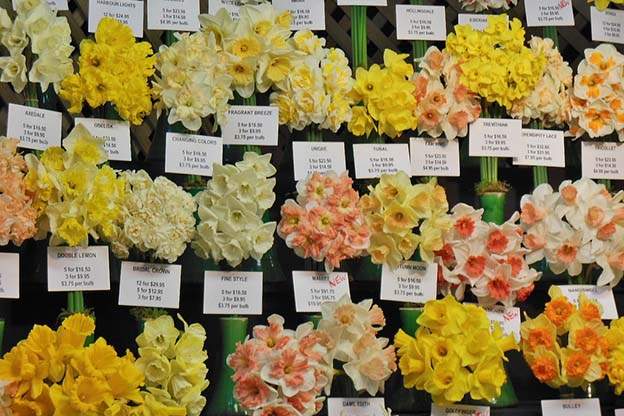
Here in the Midwest, daffodil season is on the horizon so this seems to be a good time to review the various daffodil classifications.
Trumpet
Division 1 type daffodils are the trumpet type: one flower per stem with the trumpet in the center of the flower as long as, or longer, than the surrounding petals.
The large golden ‘King Alfred' is probably the most well-known of this type and was created by John Kendall in 1899. We see them often, especially in older gardens.
Large Cups
Division 2 daffodils have exceptionally large cups (small trumpets) and produce only one flower per stem. About half of all daffodils fall into this category.
Small Cups
Division 3 daffodils have small cups, with some cups so shallow that they are described as "eyes." They also produce only one flower per stem.
Doubling
Division 4 daffodils are double varieties, and there are three types of doubling:
- The cup may be entirely absent and replaced by extra petals.
- The cup may be filled with small petals.
- The stamens may be like leaves that fill the cup.
Pendant
Division 5 daffodils are those with multiple small flowers, with a number of flowers per stem, and with the flowers hanging down. They are described as "pendant."
‘Thalia' is one of these division 5 varieties and produces small graceful white flowers with slightly reflexed petals that remind one of angel wings.
Miniature
Division 6 daffodils are the small early bloomers with long trumpets and petals that are held back.
‘Tete a Tete' is a Division 6, and we frequently see those for sale in pots at this time of the year.
Jonquilla
Division 7 are known as the jonquil daffodils, and they are scented and produce multiple flowers per stem and also bloom late.
Tazetta
Division 8 daffodils are known as Tazettas and are some of the best bulbs to force indoors.









